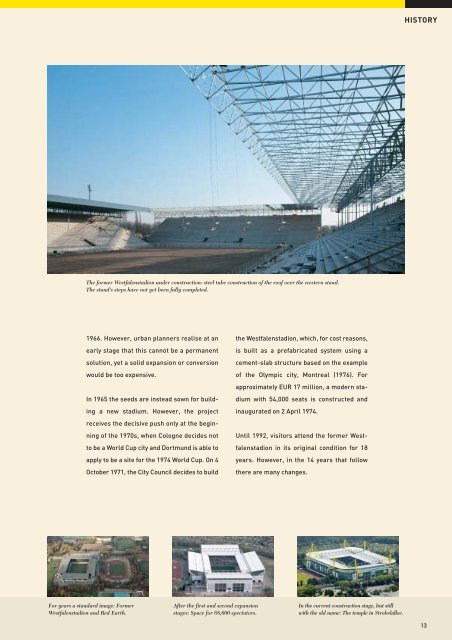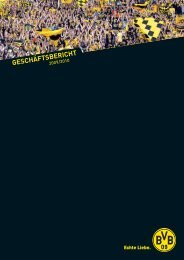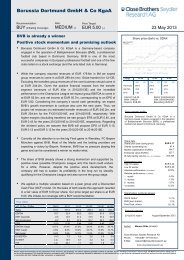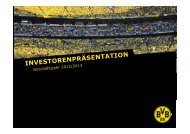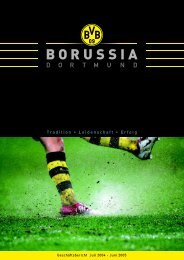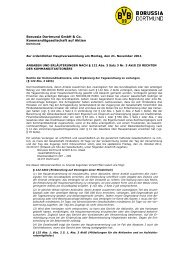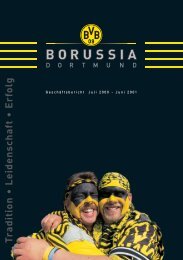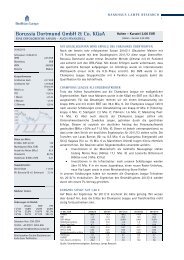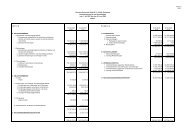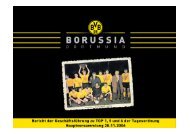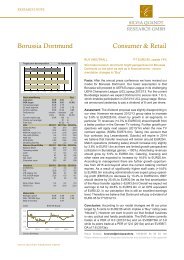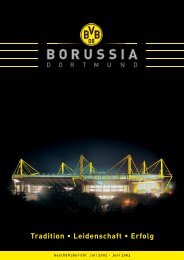Annual Report 2006/2007 KGaA/Group - BVB Aktie - Borussia ...
Annual Report 2006/2007 KGaA/Group - BVB Aktie - Borussia ...
Annual Report 2006/2007 KGaA/Group - BVB Aktie - Borussia ...
Create successful ePaper yourself
Turn your PDF publications into a flip-book with our unique Google optimized e-Paper software.
HISTORY<br />
The former Westfalenstadion under construction: steel tube construction of the roof over the western stand.<br />
The stand's steps have not yet been fully completed.<br />
1966. However, urban planners realise at an<br />
early stage that this cannot be a permanent<br />
solution, yet a solid expansion or conversion<br />
would be too expensive.<br />
In 1965 the seeds are instead sown for building<br />
a new stadium. However, the project<br />
receives the decisive push only at the beginning<br />
of the 1970s, when Cologne decides not<br />
to be a World Cup city and Dortmund is able to<br />
apply to be a site for the 1974 World Cup. On 4<br />
October 1971, the City Council decides to build<br />
the Westfalenstadion, which, for cost reasons,<br />
is built as a prefabricated system using a<br />
cement-slab structure based on the example<br />
of the Olympic city, Montreal (1976). For<br />
approximately EUR 17 million, a modern stadium<br />
with 54,000 seats is constructed and<br />
inaugurated on 2 April 1974.<br />
Until 1992, visitors attend the former Westfalenstadion<br />
in its original condition for 18<br />
years. However, in the 14 years that follow<br />
there are many changes.<br />
For years a standard image: Former<br />
Westfalenstadion and Red Earth.<br />
After the first and second expansion<br />
stages: Space for 68,600 spectators.<br />
In the current construction stage, but still<br />
with the old name: The temple in Strobelallee.<br />
13


